Most people love a relaxing pedicure. But while you may have really enjoyed that jet-powered tub and the tickle of a thorough foot filing, when the polish comes off, your nail is cloudy and yellow.
What the— is that a fungal infection? Oh my!
Getting a toe infection from a pedicure is more common than you may think. Luckily, there are a few things you can do to avoid pedicure infections.
Here are ten tips to help you leave the nail salon infection-free:
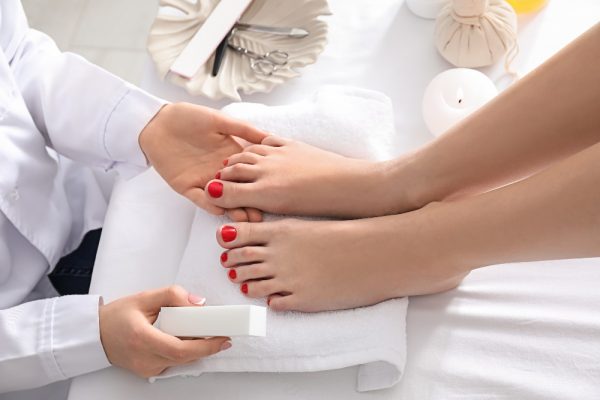
1. Skip the callus filing.
It’s a standard part of most foot bath treatments: the pedicurist pulls out a metal or plastic callus file and starts to scrub your heel. This file strips away the hardened skin, creating a softer heel. But in many cases, calluses are a good thing— and you shouldn’t get rid of them completely.
Calluses help to cushion your feet, and removing too much of this toughened skin can not only cause rubbing in your shoes or pain when walking, but can also lead to infection. Just like a cheese grater shreds a block of Parmesan, callus files create micro abrasions in your skin that invite fungus and bacteria. Pumice stones at salons are even worse; any non-metal tools cannot be properly sterilized, and the porous shape can harbor bacteria.
What to do instead: Rather than scrape off helpful callus skin, moisturize your feet regularly to avoid dry or cracked skin. If you still have an excessive buildup of dead tissue, consider a warm soak and exfoliating scrub at home, or have your calluses professionally filed by a trained podiatrist.
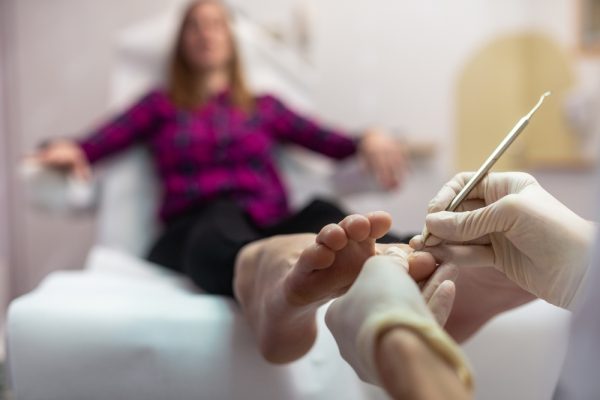
2. Never sit in a foot bath immediately after someone else leaves their seat.
Salons can get busy, and it’s not uncommon for the pedicurist to drain a foot tub, give it a rinse and usher you over for your turn right away. But we urge you to avoid getting into a chair that’s still warm from the previous customer— because that tub was not properly sanitized.
Bacteria, fungi and other microorganisms can live in that foot spa tub water, and a simple rinse won’t wash them away! The Environmental Protection Agency and Centers for Disease Control and Prevention (EPA) suggests that salons to use an EPA-registered hospital disinfectant between each customer, most of which require a minimum of 10-minute soak to disinfect.
What to do instead: The (EPA) cautions, “Do not use the foot spa if you are not sure it is disinfected and safe to use”— and we agree! If you are asked to sit in the chair immediately after someone finishes their bath, remind the staff that the tub requires a 10-minute soak with a proper disinfectant, and ask for a refund (because who knows what else they aren’t sanitizing!).
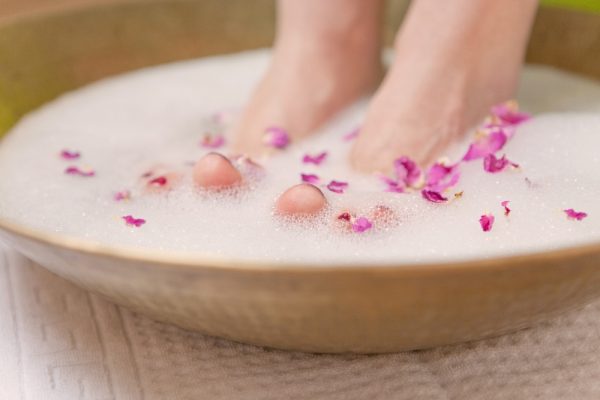
3. Say no to the jets.
As you can see, spa foot baths one of the biggest causes of pedicure infections, because the warm water creates the perfect environment for bacteria and fungi. Bath jets, in particular, are quite unsanitary, as the chamber where the water is propelled out are often home to the infectious cultures.
One podiatrist interviewed by the HuffPost estimates that she sees “about 10 to 12 patients a week that come in with fungal or viral infections, like warts and athlete’s foot, caused by build up in whirlpool foot baths.”
What to do instead: We know the jets can feel nice, but it’s best to pass on tubs with these pressured controls. Try finding a salon that has pipeless foot baths, or better yet, one that lines their tubs with individual bath liners with each new soak!
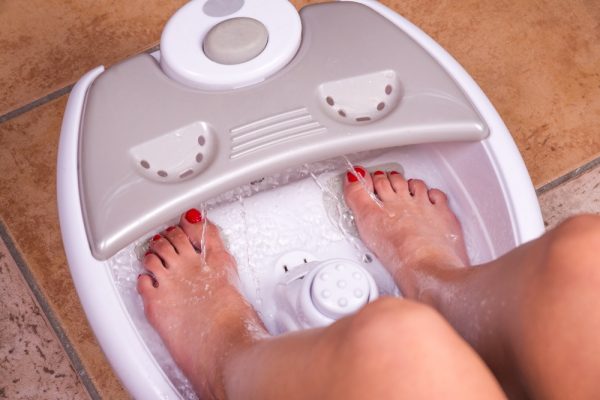
4. Cancel your nail appointment if you have cuts or open sores, including bug bites.
This one seems obvious: open skin + bacteria/fungi = infection. These contaminants don’t just live in the foot bath water, they can also be found on pedicure tools like clippers, files and (we hate to say it) but even within the nail polish bottles themselves.
Because infection can spread so easily from open wounds, or even from minor abrasions like brush burns or scrapes, we advise you to skip the nail salon if you have any wounds. This includes bug bites— which can be on your legs and get infected when the pedicurist scrubs your legs in the bath treatment.
What to do instead: Wait until your wounds fully heal before scheduling your nail appointment. If you are diabetic, this is even more important!
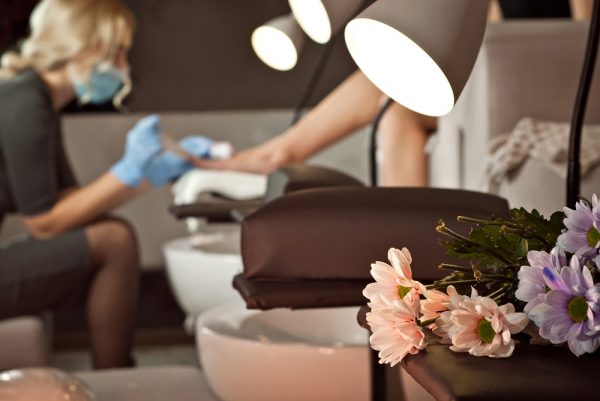
5. Don’t shave beforehand.
Shaving falls under the same category as open wounds. Although you might not think you cut yourself with the razor, the blades create microtears in your skin, which can allow bacteria to enter through your legs.
Because of how easily contamination can spread through the microtears created by razor blades, the EPA recommends, “Do not shave, use hair removal creams or wax your legs during the 24 hours before receiving treatment in a foot spa.”
What to do instead: Go a little hairy; the pedicurist will survive!
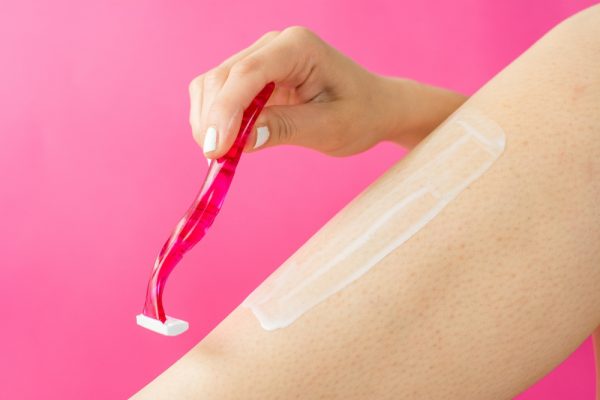
6. Pass on the cuticle trim.
These last two tips for avoiding pedicure infections were focused around open wounds— and this one is too. When you have the pedicurist trim your cuticles, you are literally causing a cut to your skin.
The American Academy of Dermatology encourages you to always protect your cuticles. It’s your nail’s protective barrier, and cutting it away or forcefully pushing it back can be damaging and invite infection.
What to do instead: If your cuticles are a little wild, try lubricating them with a gentle lotion or whip up a DIY cuticle soak at home. Once softened, gently push them back with a wooden cuticle stick.
If at the salon, be cautious of any cuticle soaking solutions; be sure to ask what is in it and ensure the metal cuticle pushing tool was sterilized for at least 10 minutes. Remind the pedicurist to be soft and sweet!
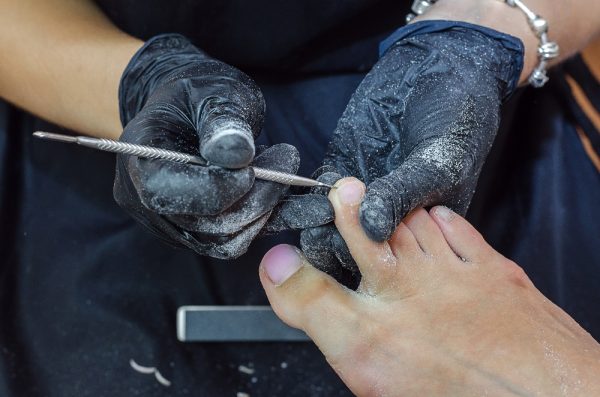
7. Skip the salon that sterilizes tools with UV light.
Speaking of sterilizing cuticle pushing sticks, all the tools used at a spa need to be properly sanitized. At some nail salons, you’ll see a toaster-oven like machine that uses UV light to sanitize anything inside. However, with UV devices like this, it’s a six-hour process to sterilize. Placing tools in a machine like this for a few minutes won’t do much good to get rid of infectious fungi or bacteria.
Three states (Texas, New York and Iowa) require a machine called an autoclave in nail salons by law, which kills infective organisms using high pressure and steam. Here in Florida, however, it’s a hit or miss if your spa will have one, so it’s often safer to trust the right liquid disinfectant solution.
You’ve probably seen tools soaking in a blue liquid disinfectant before at a nail salon. This solution is usually Barbicide, and it’s a good sign to trust the pedicurist. These tools are often safe to use without the worry of bacterial or fungal transfer.
What to do instead: Ensure the nail salon is letting their metal tools soak in an EPA-registered disinfectant or ask if they use an autoclave.
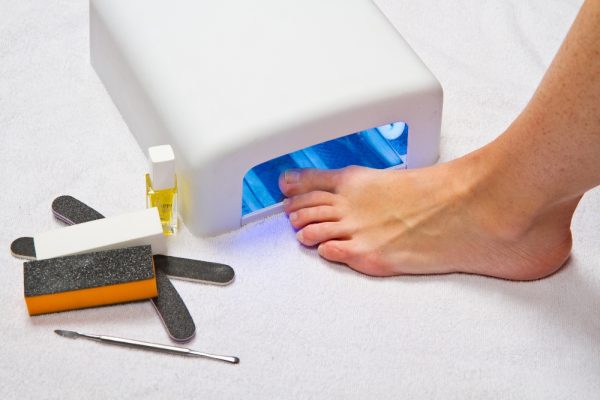
8. Schedule your appointment early in the day.
Simply put, a nail salon should be at its cleanest first thing when it opens. The salon likely sanitized its tools overnight and cleaned all machinery or soaked their bathing tubs overnight.
That’s why Advancing Foot and Ankle Medicine and Surgery (APMA) recommends scheduling your pedicure early, before others use the tools and equipment, to avoid pedicure infections.
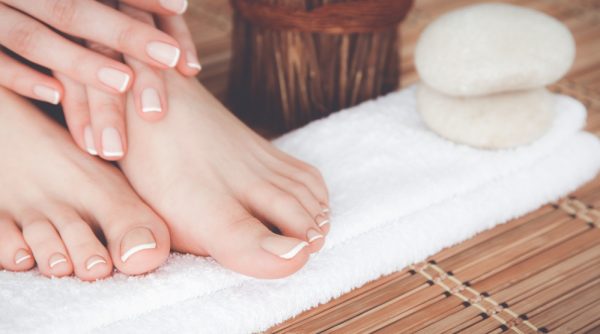
9. Bring your own pedicure tools to the nail salon.
Don’t be embarrassed to bring your own tools or even nail polish to a nail salon! Not all businesses will be okay with this, but a flexible pedicurist can work with whatever tools you bring them.
You’ll have greater peace of mind knowing that your pedicure tools were sterilized properly and only used by you— not hundreds of other strangers.
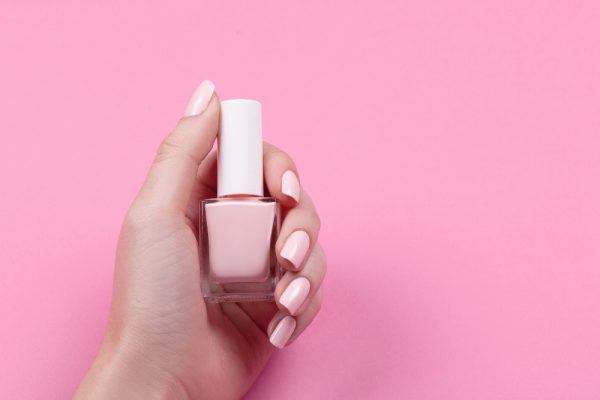
10. Never cover up an infected nail.
It’s not uncommon for people to go to a nail salon specifically to cover up a fungal nail infection. It’s a relentless cycle: they get an infection at the salon and go back to cover up their nasty yellow nail after the polish wears off!
People like this are likely the ones spreading the infection to others. Plus, wearing artificial nails or coating your problem can actually make the infection worse.
What to do instead: If you suspect you’ve developed a fungal nail infection, see a podiatrist; you will likely need a prescription antibiotic to treat it. If you develop a red sore after a pedicure, you may have a bacterial infection. Also, seek professional care before this condition worsen!
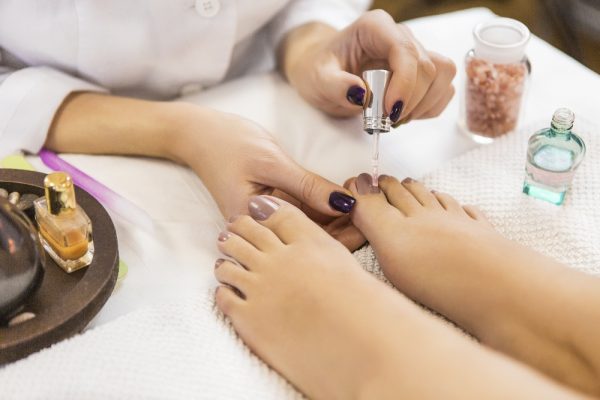
Consider a Home Pedi or a Professional Treatment
Oftentimes, a home pedicure is the safest way to avoid foot or toe infections. Ask a member of our team for advice on how to properly sanitize your tools and we’d be happy to share our recommendations.
For those who fell victim to a fungal or bacterial infection, you might need an antibiotic. Luckily, our team is here to diagnose and treat your foot infections. We can even help you trim those ingrown toenails or help those with diabetes avoid infection.
Visit our contact page to make a quick appointment or give us a call today at 239.936.5400.
Categorized in: Blog